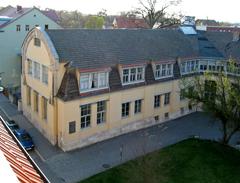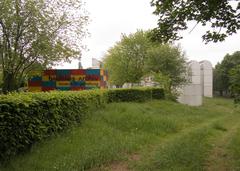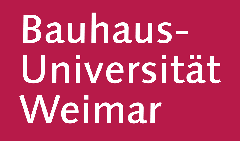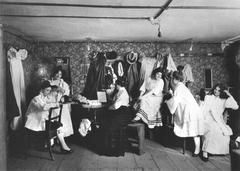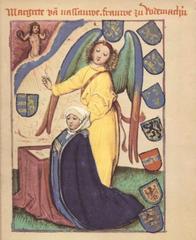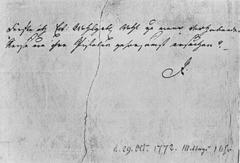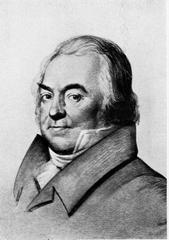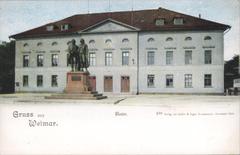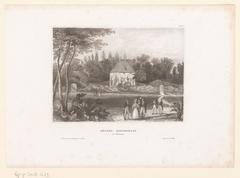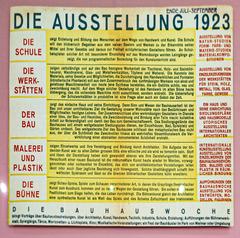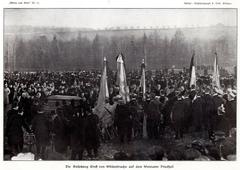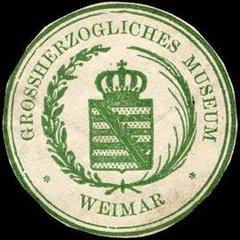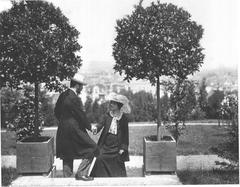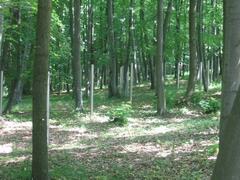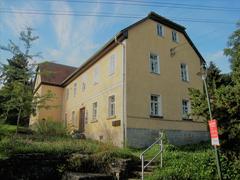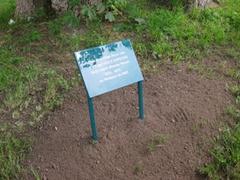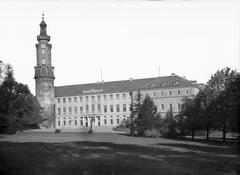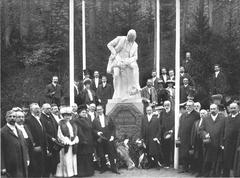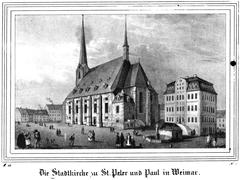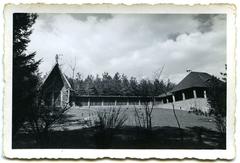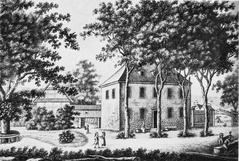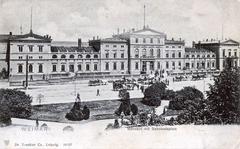Schloss Tiefurt: Visiting Hours, Tickets, and Comprehensive Travel Guide to Weimar’s Historic Estate
Date: 14/06/2025
Introduction: Schloss Tiefurt’s Legacy and Visitor Appeal
Schloss Tiefurt, situated on the tranquil banks of the Ilm River just outside Weimar, Germany, is a striking emblem of Weimar Classicism and Enlightenment culture. Originally a simple tenement house in the mid-18th century, it was transformed into a vibrant summer residence and intellectual salon under Duchess Anna Amalia of Saxony-Weimar-Eisenach. The estate became a gathering place for luminaries such as Goethe, Schiller, and Herder, fostering artistic and philosophical exchange. The English-style landscaped park, adorned with poetic monuments and memorials, exemplifies a pioneering approach to landscape design that harmonizes nature, art, and philosophy.
Today, Schloss Tiefurt offers an immersive historical experience, with well-preserved period interiors, expansive romantic gardens, and notable art collections including sculptures and historic porcelain. As part of the UNESCO “Classical Weimar” World Heritage Site, it plays a vital role in European cultural history (Klassik Stiftung Weimar; Spotting History; Schatzkammer Thüringen). This guide provides all essential information for your visit, including opening hours, ticketing, accessibility, nearby attractions, and practical tips.
Table of Contents
- Introduction
- Historical Overview
- Visiting Information
- Notable Figures and Events
- Architectural and Artistic Features
- Preservation and Modern Role
- Frequently Asked Questions (FAQ)
- Exploring Tiefurt Park
- Practical Visitor Tips
- Visuals and Interactive Resources
- Related Articles
- Conclusion
- References
Historical Overview
Origins and Early Development (1765–1781)
Schloss Tiefurt began as a tenement house for a grand ducal demesne in 1765, serving estate staff. In 1776, Prince Friedrich Ferdinand Constantin, brother of Duke Carl August, expanded it into a country mansion and, with his tutor Karl Ludwig von Knebel, began developing the English-style park—a significant departure from formal baroque gardens (Klassik Stiftung Weimar).
The Anna Amalia Era (1781–1807)
Duchess Anna Amalia adopted Tiefurt as her summer residence in 1781. She transformed the estate into an intellectual hub, hosting salons and artistic gatherings attended by Goethe, Herder, Wieland, and Schiller. The park gained romantic structures and monuments, including the Temple of the Muses and the Herder stone (Spotting History).
Decline and Restoration (1806–1850)
French troops plundered Tiefurt in 1806, and the estate lost prominence after Anna Amalia’s death. In 1820, her grandson Carl Friedrich initiated renovations, and court gardener Eduard Petzold redesigned the park between 1846–1850, shaping much of its present form (Klassik Stiftung Weimar).
Transition to Public Museum
Continuing as a ducal residence through the 19th century, Tiefurt was opened as a museum in 1907 by Grand Duke Wilhelm Ernst to commemorate Anna Amalia. The collection features her travel mementos, sculptures by Gottlieb Martin Klauer, and porcelain from renowned manufactories (Spotting History).
Cultural Significance & UNESCO World Heritage
Schloss Tiefurt is a key symbol of Weimar Classicism and early sentimental landscape gardening. Since 1998, it has been part of the UNESCO “Classical Weimar” World Heritage Site, preserving its intellectual and artistic legacy (Klassik Stiftung Weimar; UNESCO World Heritage – Classical Weimar).
Visiting Information
Visiting Hours
- Castle: Tuesday–Sunday, 10:00 AM–5:00 PM (last entry 4:30 PM). Closed Mondays and certain holidays.
- Park: Open year-round, 24 hours daily. Free access (Schatzkammer Thüringen).
Ticket Prices
- Castle Admission:
- Adults: €6
- Reduced (students, seniors): €4
- Children under 18: Free
- Park: Free
- Special Events: Check for additional pricing and booking requirements.
Accessibility
- The park’s main paths are accessible for wheelchairs and strollers; some mansion areas may have limited access due to historic constraints. Assistance devices are available on request.
- Contact the visitor center in advance for specific needs.
Getting There
- About 3–4 km east of Weimar city center.
- Reachable by local bus, bicycle along the Ilm River, or car (parking available near entrance).
- The Maria-Pawlowna-Pfad offers a scenic walking route from central Weimar (Indigo Blau).
Nearby Attractions
- Goethe National Museum and Goethe’s House
- Duchess Anna Amalia Library
- Bauhaus Museum Weimar
- Ilm Park
- Schiller’s House
Notable Figures and Events
- Duchess Anna Amalia (1739–1807): Artistic patron, central to Weimar Classicism.
- Prince Friedrich Ferdinand Constantin (1758–1793): Initiated Tiefurt’s transformation.
- Karl Ludwig von Knebel (1744–1834): Tutor and poet, co-designer of the park.
- Johann Wolfgang von Goethe (1749–1832): Regular guest, inspired by and influencing Tiefurt’s intellectual culture.
- Eduard Petzold (1815–1891): Redesigned the park in the 19th century.
Architectural and Artistic Features
- Two-story mansion with authentic 18th-century interiors.
- Sculptures and busts by Gottlieb Martin Klauer.
- Porcelain from Meissen, Copenhagen, Fürstenberg, Vienna.
- Monuments: Temple of the Muses, Herder stone, sundial, and more (Spotting History).
Preservation and Modern Role
Managed by Klassik Stiftung Weimar, Schloss Tiefurt functions as a museum and park, hosting exhibitions, concerts, and educational programs while preserving the estate’s original character (Klassik Stiftung Weimar – Veranstaltungen).
Frequently Asked Questions (FAQ)
Q: What are the visiting hours?
A: Castle: Tuesday–Sunday, 10:00–17:00; Park: open 24/7 year-round.
Q: How much are tickets?
A: Adults €6, reduced €4, children under 18 free. Park entry is free.
Q: Is the site accessible?
A: Main park paths are accessible; some mansion areas may be challenging.
Q: Are guided tours available?
A: Yes, primarily in German; book in advance for group tours.
Q: What facilities are available?
A: Limited inside; dining nearby at Alte Remise restaurant and in Weimar.
Exploring Tiefurt Park
Design and Layout
The 21-hectare park exemplifies English landscape design, favoring winding paths, natural groupings, and scenic sightlines over rigid formality (Schatzkammer Thüringen). The Schafbrücke and Gelbe Brücke cross the Ilm River, linking the park’s sections (Weimar Kennenlernen).
Monuments and Memorials
Key features include:
- Temple of the Muses: Classical rotunda, a gathering place for Weimar’s intellectual elite (Schatzkammer Thüringen).
- Mozart Monument, Herderstein, Wieland Monument: Commemorate pivotal figures of Weimar Classicism (Weimar Kennenlernen).
- Sundial by Klauer, graves of Leopold von Braunschweig and Prince Konstantin, and monument to Anna Amalia.
Walking Routes and Facilities
Suggested route: Start at the castle, visit the Temple of the Muses, cross both bridges, and explore the wooded hillside. Benches and shaded areas are plentiful. The park is bicycle-friendly via the Ilmtal-Radweg (Weimar.de). Alte Remise restaurant serves local cuisine.
Seasonal Highlights
Spring and summer bring wildflowers and lush meadows; autumn features vibrant foliage. Mature trees, some over two centuries old, enhance the atmosphere (Schatzkammer Thüringen).
Artistic & Literary Connections
The park was a salon for poetry, music, and philosophy, frequented by Goethe, Schiller, Herder, and Wieland. Artistic inscriptions and monuments reflect these exchanges (Schatzkammer Thüringen).
Practical Visitor Tips
- Best Time: Spring to early autumn for gardens in full bloom.
- Duration: Allocate 1–2 hours for mansion and park.
- Language: Bring a translation app; most signage is in German.
- Accessibility: Wear comfortable shoes; confirm accessibility needs in advance.
- Nearby: Combine with visits to other Classical Weimar sites for a complete cultural itinerary.
Visuals and Interactive Resources
- High-quality images and virtual tours are available on the official websites.
- Interactive maps and suggested routes enhance planning.

Image Alt Text: Schloß Tiefurt Mansion surrounded by English-style landscaped park


Related Articles
Conclusion
Schloss Tiefurt offers a unique immersion in Weimar’s classical era, blending historic architecture, thoughtfully designed parkland, and a legacy of artistic and philosophical achievement. With free year-round park access, affordable castle admission, and proximity to other Weimar landmarks, Tiefurt is a rewarding destination for history enthusiasts, culture lovers, and nature admirers alike. Enhance your visit by checking official sources for the latest hours, ticketing, and events.
Call to Action
Plan your visit to Schloss Tiefurt and enrich your experience with the Audiala app for guided tours and insider tips. Stay updated on special events and exhibitions, and follow us on social media for the latest travel inspiration across Weimar’s historic sites!
